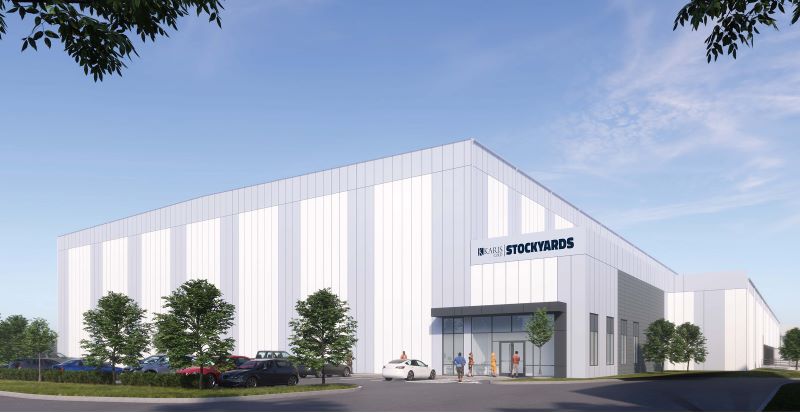December 2011
Is the O’Hare Market Ready for Take-off?
As seen in RE JournalsBy Adam Marshall
NAI Hiffman Industrial Services Group
Chicago’s O’Hare industrial market houses a diverse mix of distribution and manufacturing companies in one of the largest concentrations of industrial property in the Midwest. Surrounding O’Hare International Airport, the O’Hare industrial market is comprised of Elk Grove Village, Des Plaines, Rosemont, Franklin Park, Bensenville, Wood Dale and Itasca. During the economic downturn, this market suffered greatly and still shows signs of high vacancy rates, historically low rental rates and sale prices. What signs can we look for to forecast the future of the O’Hare industrial market?
It is hard to find consistent and clear data to predict future trends, but two good sources of local information provide an insight into this market. First, the Chicago Department of Aviation collects monthly air cargo volume figures based on freight tonnage at O’Hare International Airport. Second, the Federal Reserve Bank of Chicago tracks Midwest manufacturing output in Illinois, Indiana, Iowa, Michigan and Wisconsin. Reviewing these two indicators tells a great story of where this market has been and where it is going.
In the heart of this market, air cargo volume at O’Hare can be used as a leading indicator for distribution space demand in this area. Using a regression model on O’Hare air cargo tonnage and the O’Hare industrial vacancy rate over the past ten years, the effect of cargo tonnage is statistically significant and negative. This means when air cargo tonnage increases or decreases, there will most likely be a lagging opposite effect on vacancy rate. As an example, in 2009 we experienced the lowest cargo volume recorded over the past ten years and a 14% decrease from 2008. The vacancy rate in the first quarter of 2009 was 11.22%. It increased to its highest reading in the past 10 years to 12.59% in the first quarter of 2010 representing a 12% increase in the vacancy rate within 12 months. We soon witnessed the opposite effect with a dramatic 24% increase in cargo tonnage during 2010 which paralleled a 7% drop in the vacancy rate from the first quarter of 2010 to the first quarter of 2011. Currently cargo tonnage through the third quarter of 2011 has decreased slightly by approximately 4% versus the same period in 2010 with a corresponding 10.8% vacancy rate.
The importance of air cargo distribution in the O’Hare market is exemplified by a few recent deals. The largest transactions in the market this year were logistics companies leasing modern distribution space. CEVA Logistics leased 232,000 square feet and Hegele Logistics leased 207,000 square feet in the 439,000 square foot ProLogis owned building at 855 N. Wood Dale Rd in Wood Dale. Companies like these that rely on expediting time sensitive products through O’Hare Airport drive much of the space demand in this market.
The volatility of 2009 and 2010 is behind us. We now see a stabilization of air cargo volume at O’Hare over the past twelve months. With no new speculative property development in this market, we should see demand continue to slowly reduce current vacancy rates.
Another pulse to watch in this market is the Chicago Federal Reserve Midwest Manufacturing Index. While broad in its scope of coverage across the Midwest, it uses “hours worked” data to measure monthly changes in regional manufacturing activity. The height of this index achieved a reading of 101.3 in January of 2008. The lowest point recorded a 68.3 in June of 2009, representing a 33% decrease from the peak. The September 2011 index was 85.2 which is a 25% recovery from the bottom in 2009. This reading is also the highest level in three years since posting an 86.5 in October 2008. The current index is only down 7% from the 10 year average of 91.3 although it has remained relatively flat over the past six months.
The Chicago Federal Reserve Midwest Manufacturing Index is not a leading indicator for industrial demand in O’Hare. However, it is a general gauge for local production which directly impacts the supply chain and movement of goods through this area. While our economy shifts towards distribution, manufacturing is still dominant in the O’Hare market. One of the largest manufacturing deals in O’Hare this year was the relocation of Toyo Ink America to 108,000 SF at 1225 N. Michael Drive in Wood Dale which doubled their capacity.
Relative to the air cargo volumes at O’Hare, the Chicago Federal Reserve Midwest Manufacturing Index corresponds to the variability seen over the past couple of years. Keep a watchful eye on these important statistics as they will likely determine future demand in the O’Hare industrial market. While both data sources show improvement from the bottoming out of these indexes in 2009, neither set indicates substantial growth in the near future. The stabilization in these latest figures should allow for a slow but smooth take-off to recovery in the O’Hare market.
Follow these statistics at www.ChicagoIndustrialist.com
Adam Marshall, CCIM, is an industrial real estate broker at NAI Hiffman and specializes in the O’Hare and surrounding markets.




